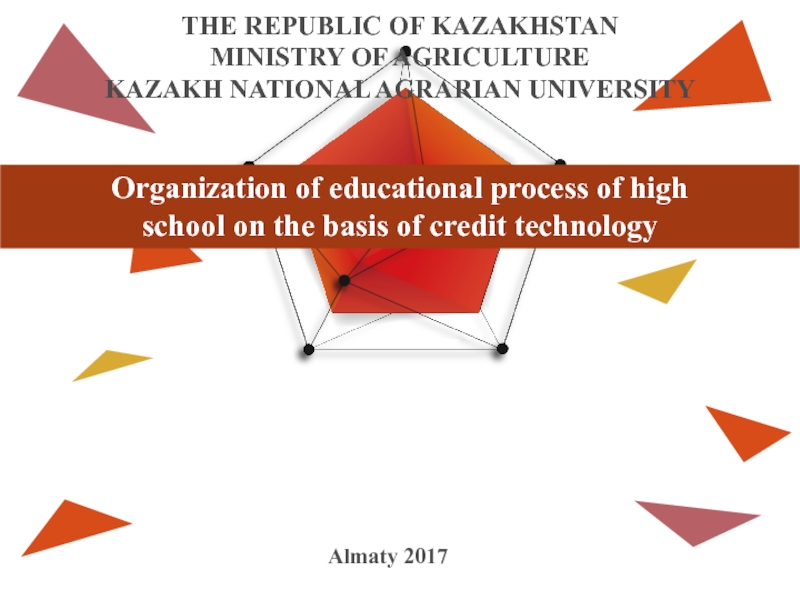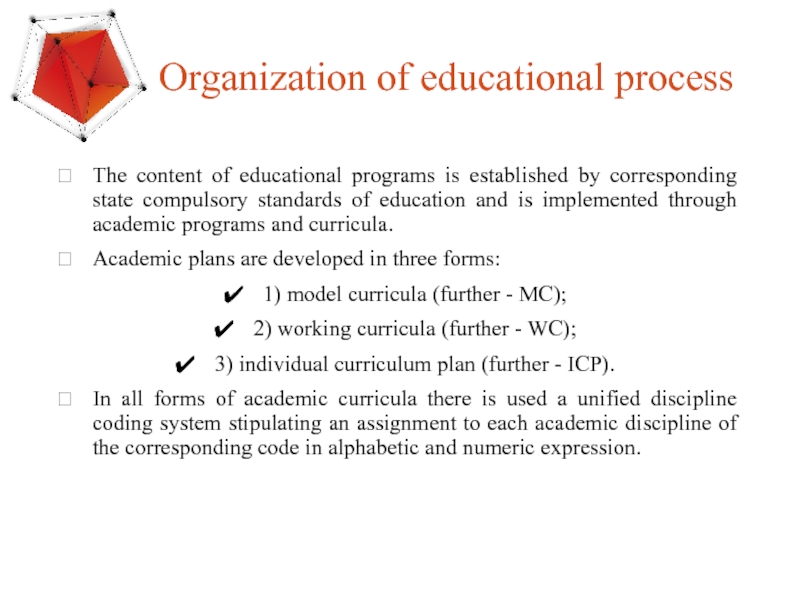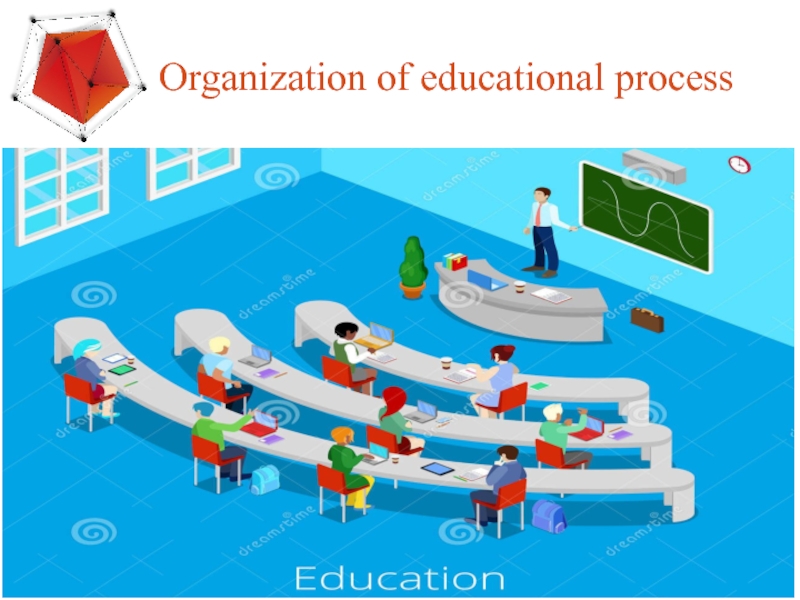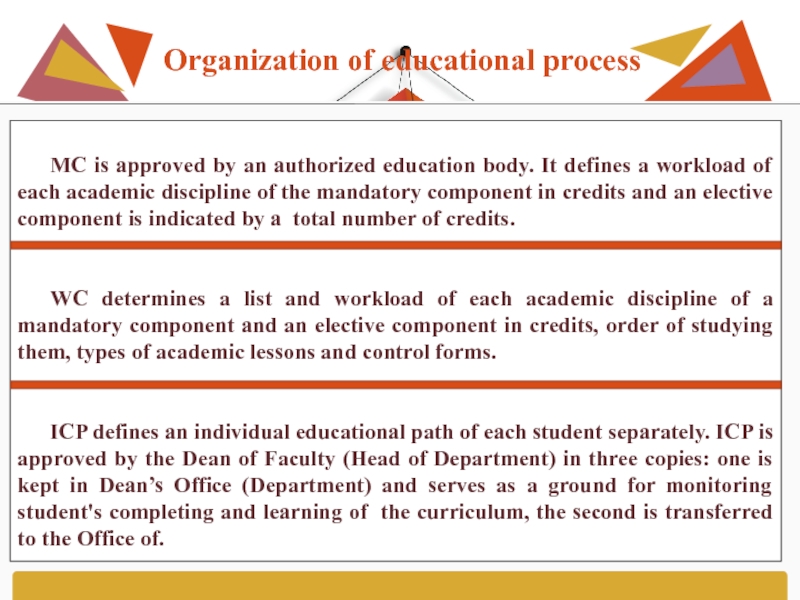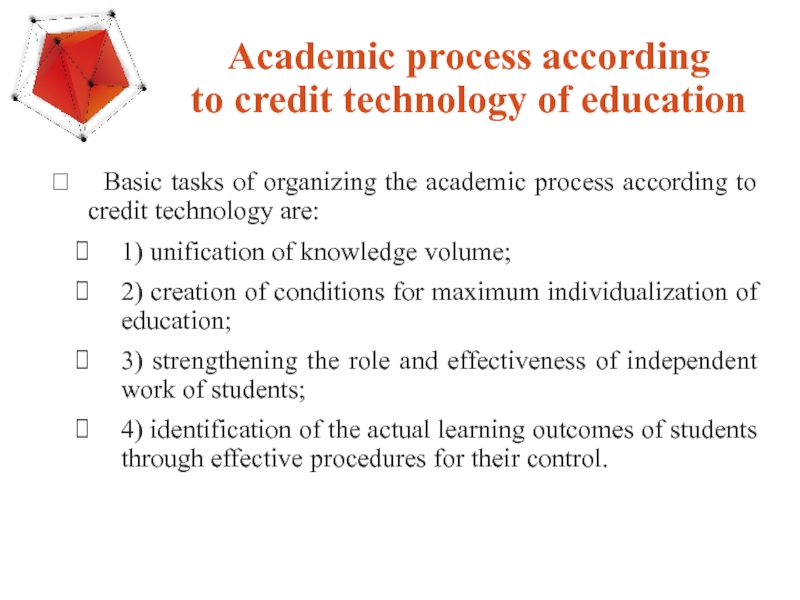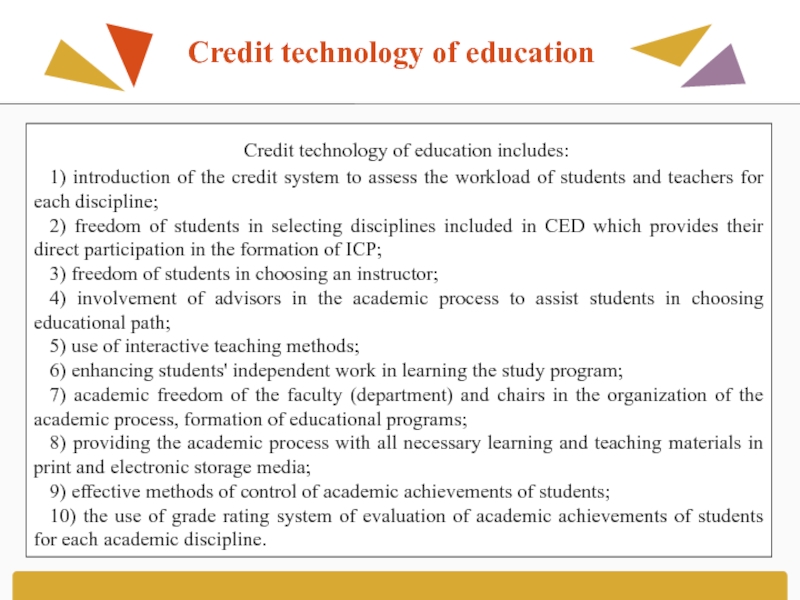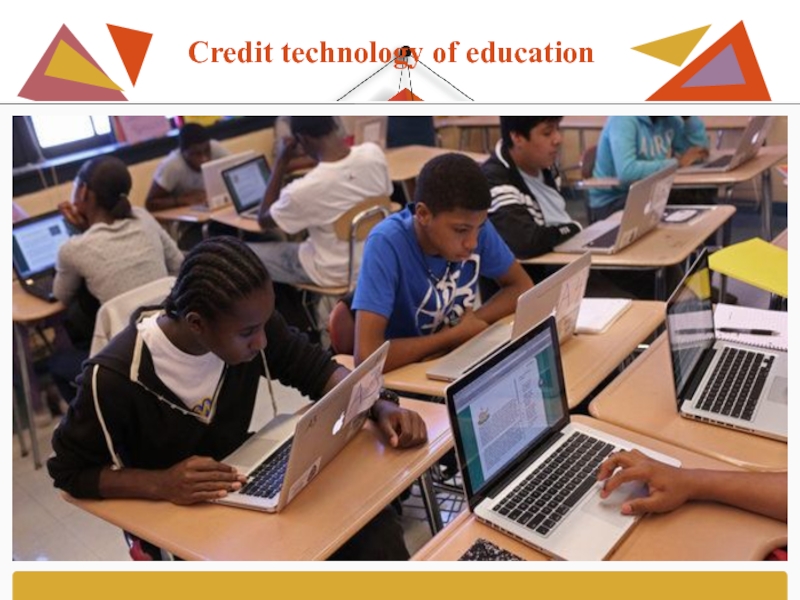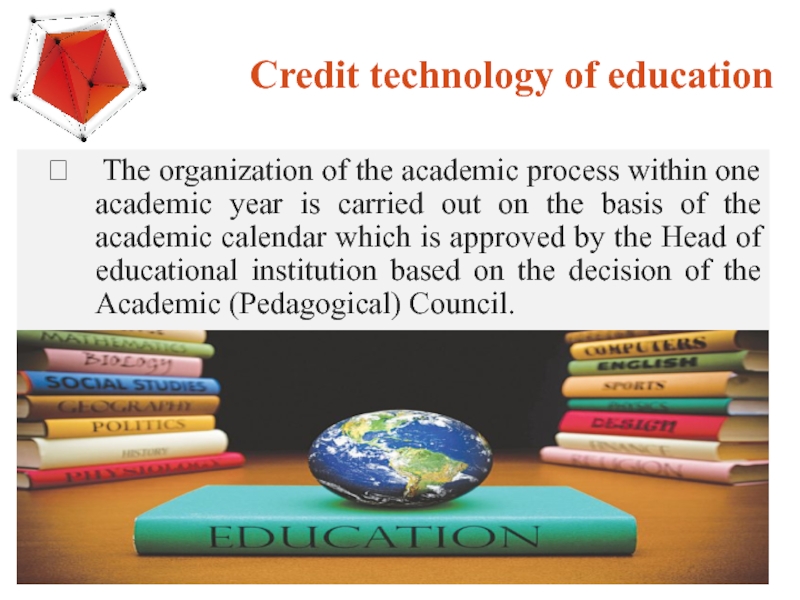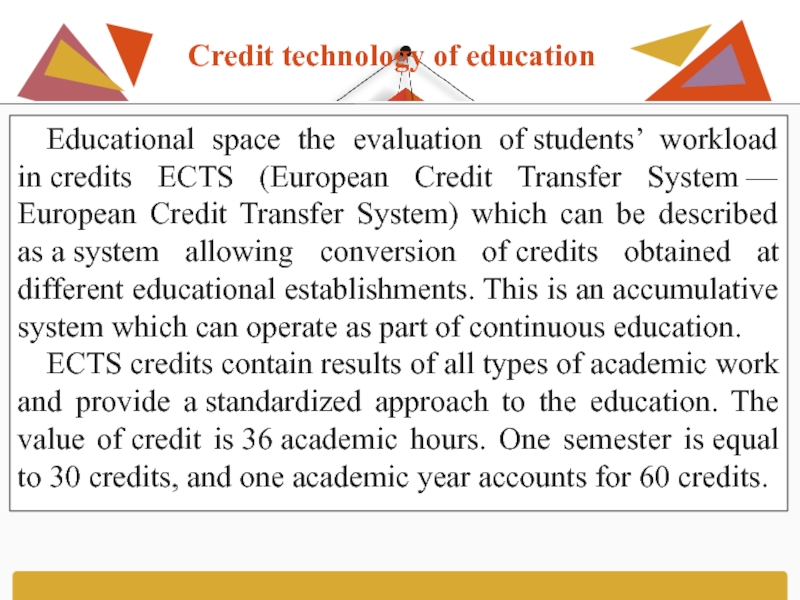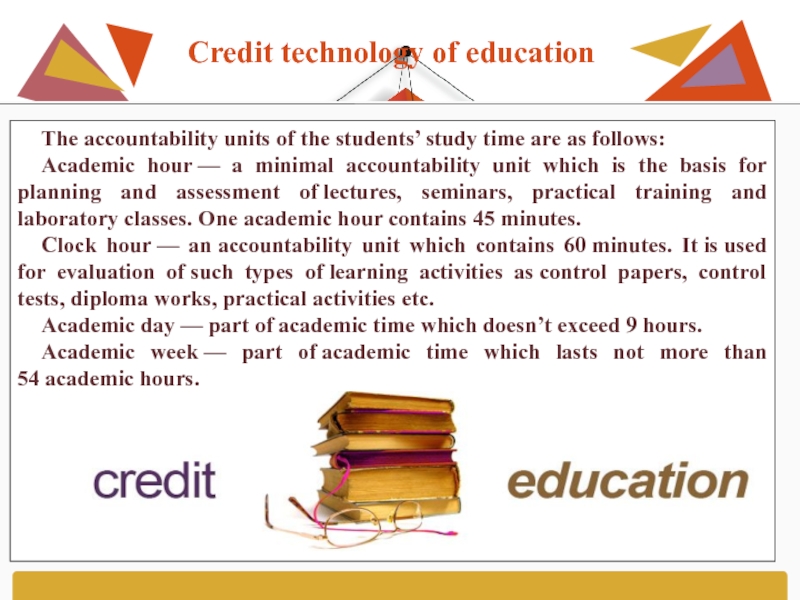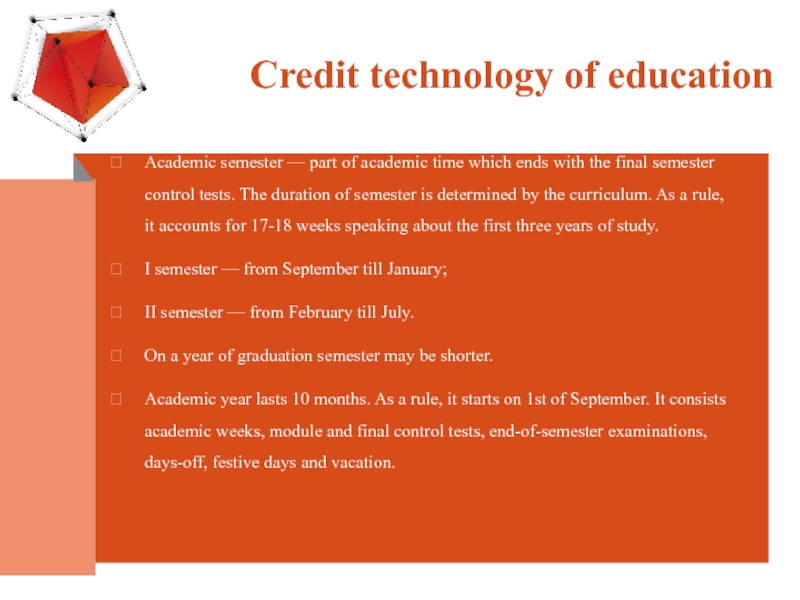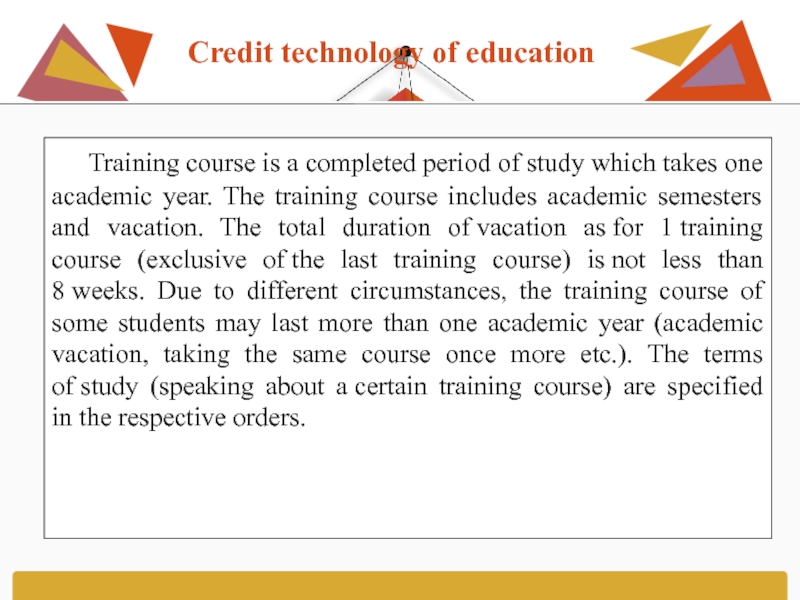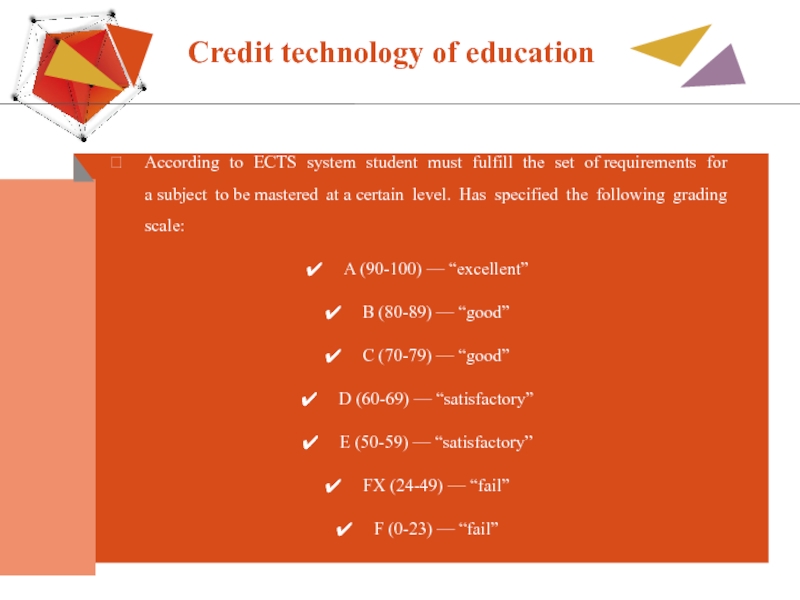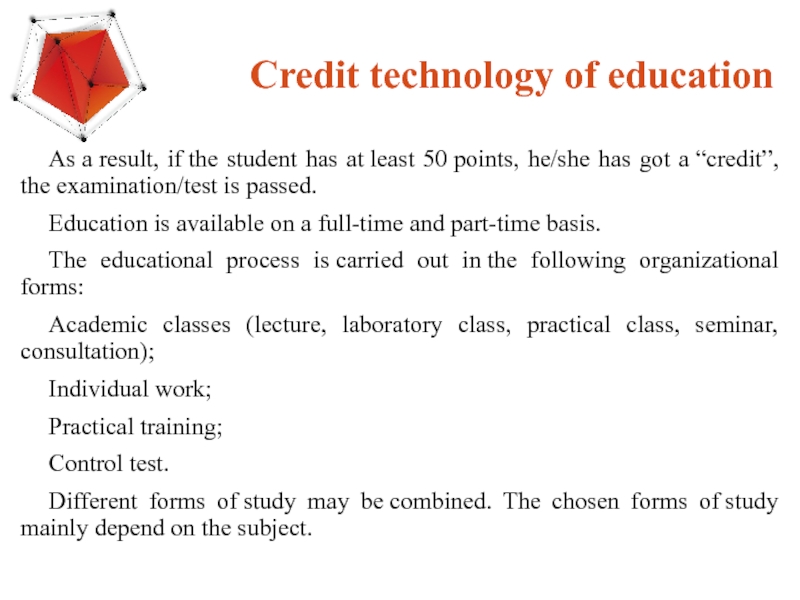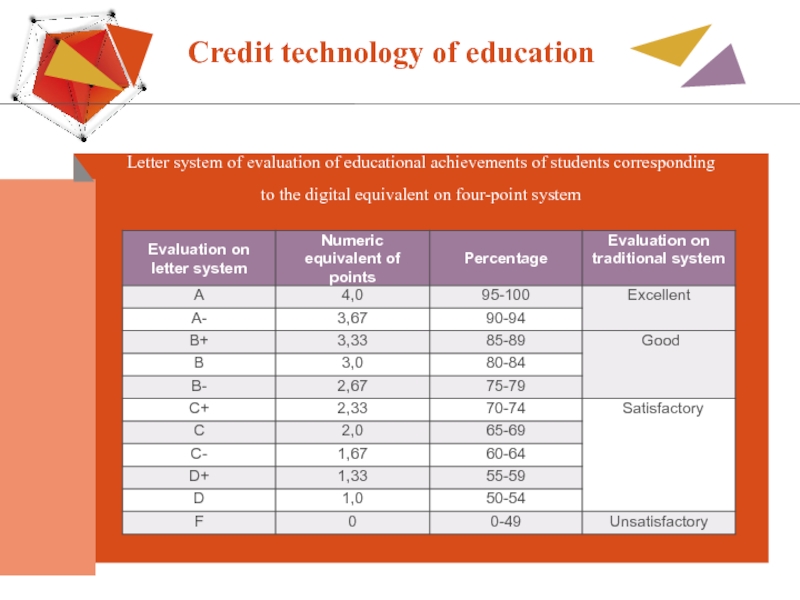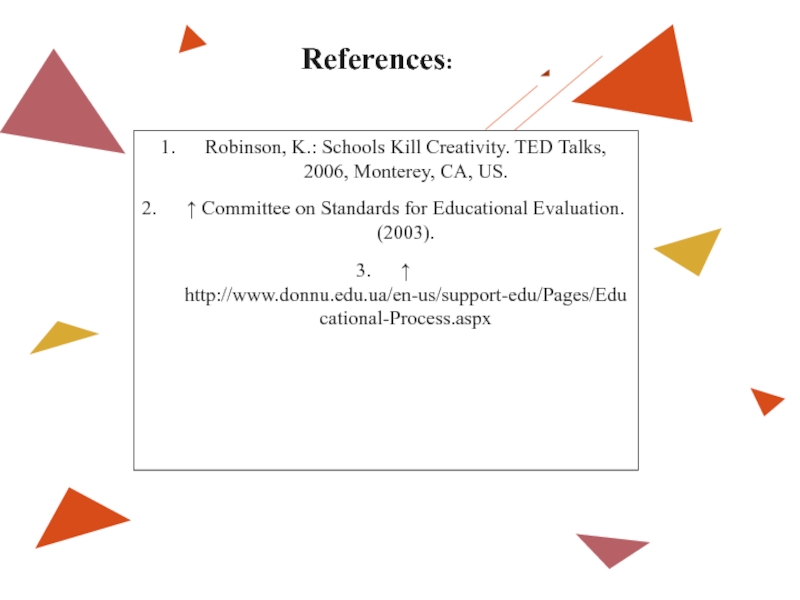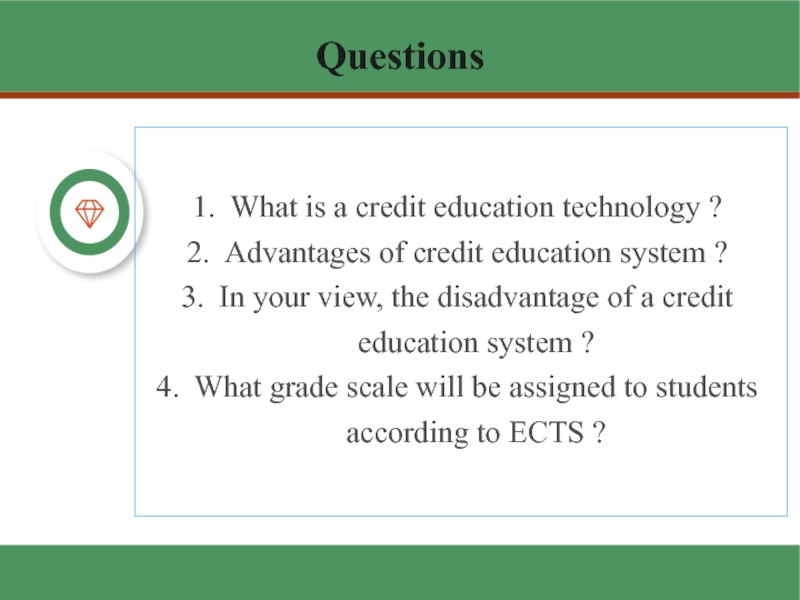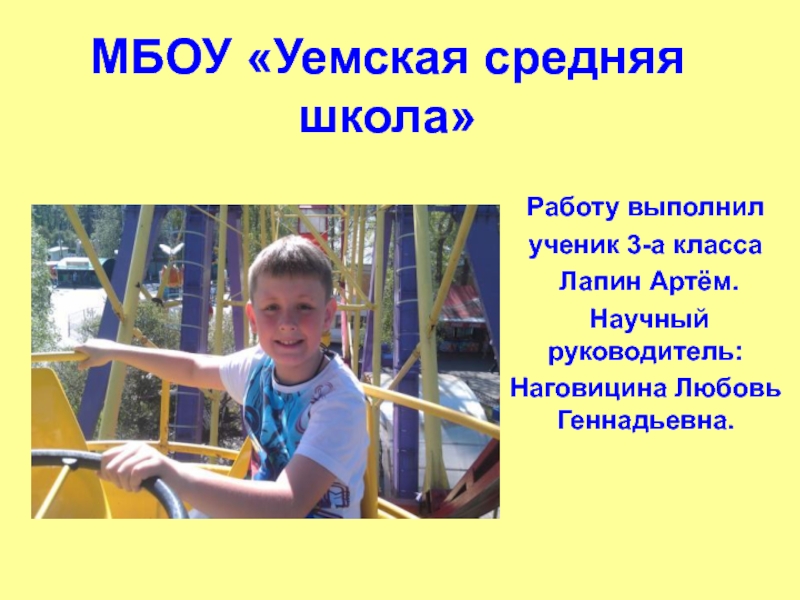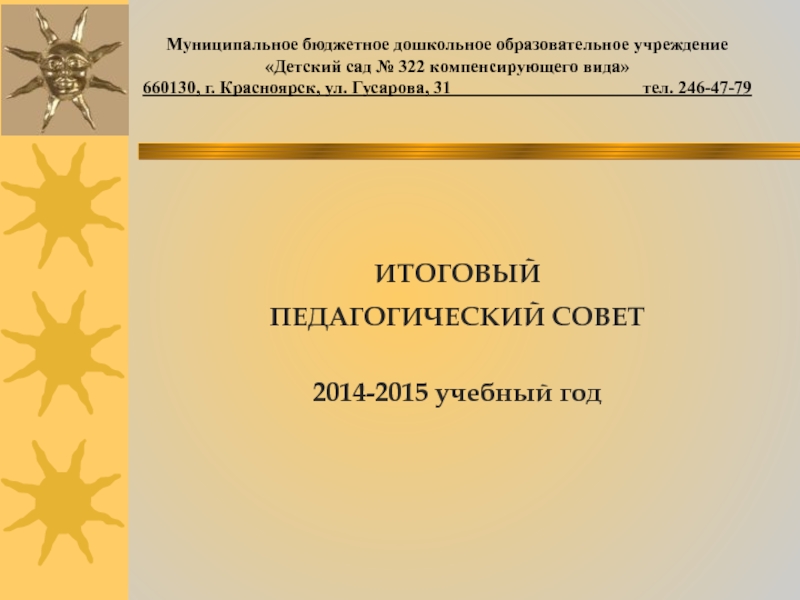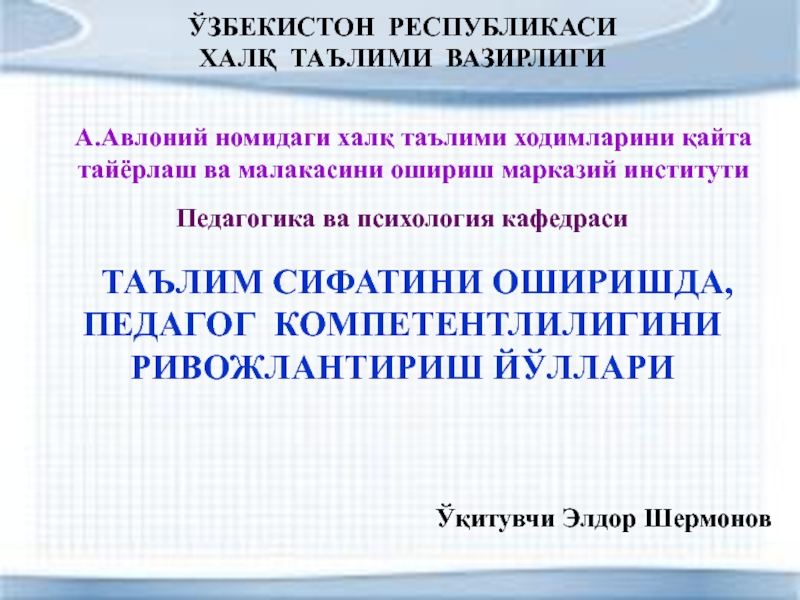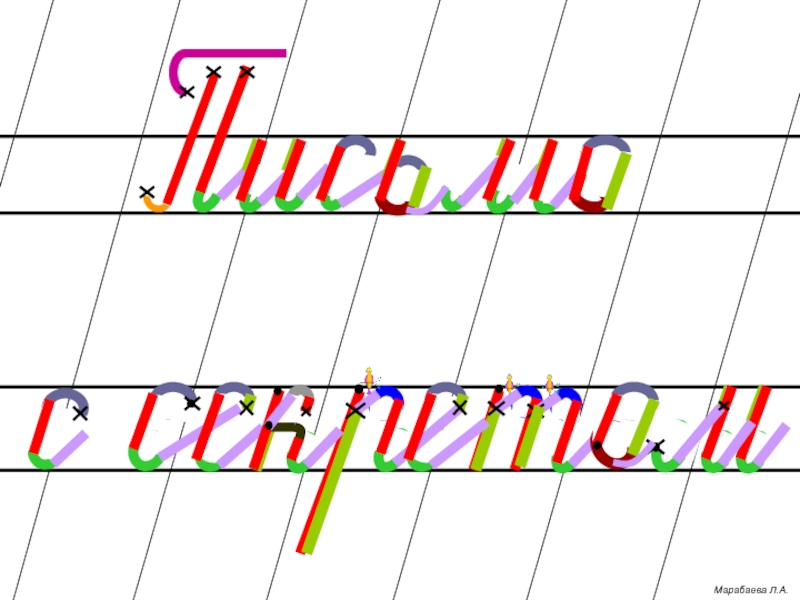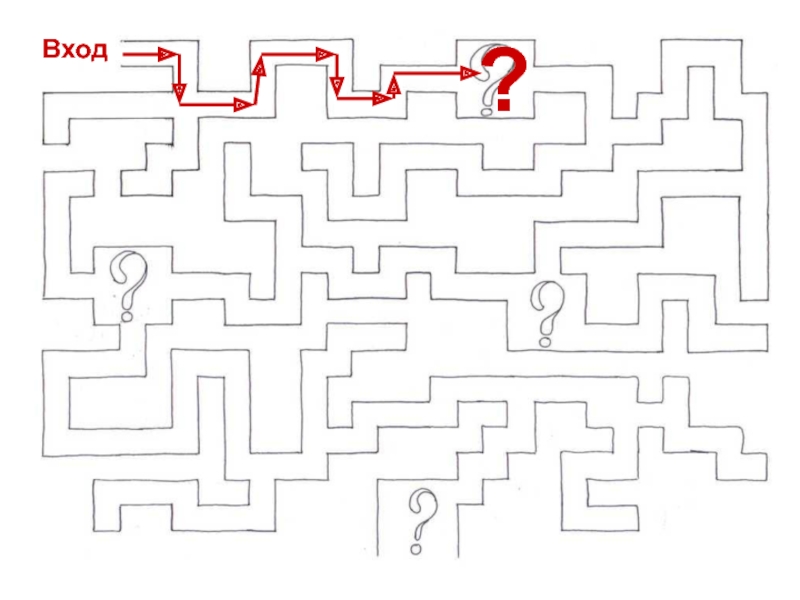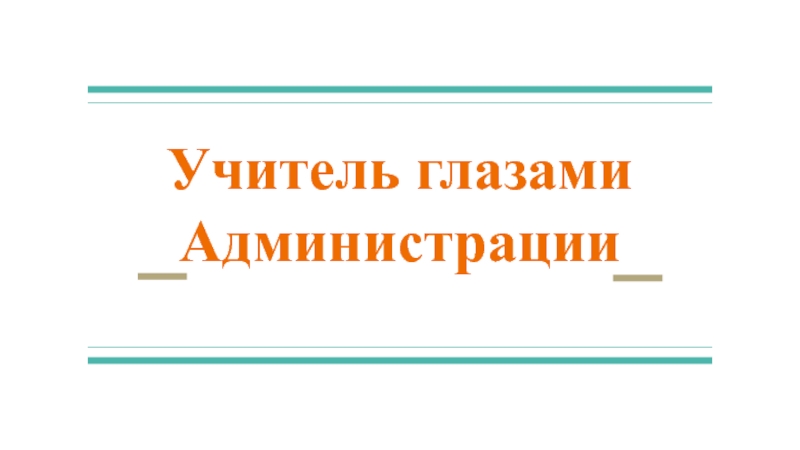- Главная
- Разное
- Дизайн
- Бизнес и предпринимательство
- Аналитика
- Образование
- Развлечения
- Красота и здоровье
- Финансы
- Государство
- Путешествия
- Спорт
- Недвижимость
- Армия
- Графика
- Культурология
- Еда и кулинария
- Лингвистика
- Английский язык
- Астрономия
- Алгебра
- Биология
- География
- Детские презентации
- Информатика
- История
- Литература
- Маркетинг
- Математика
- Медицина
- Менеджмент
- Музыка
- МХК
- Немецкий язык
- ОБЖ
- Обществознание
- Окружающий мир
- Педагогика
- Русский язык
- Технология
- Физика
- Философия
- Химия
- Шаблоны, картинки для презентаций
- Экология
- Экономика
- Юриспруденция
Organization of educational process of high school on the basis of credit technology презентация
Содержание
- 1. Organization of educational process of high school on the basis of credit technology
- 2. Organization of educational process The content
- 3. Organization of educational process
- 4. MC is approved by an
- 5. Basic tasks of organizing the academic
- 6. Credit technology of education includes:
- 7. Credit technology of education
- 8. The organization of the academic process
- 9. Educational space the evaluation of students’ workload
- 11. The accountability units of the students’ study
- 12. Academic semester — part of academic
- 13. Training course is a completed period
- 14. According to ECTS system
- 15. As a result, if the student has at least 50 points, he/she
- 16. Letter system of evaluation
- 17. Robinson, K.: Schools Kill Creativity. TED Talks,
- 18. Questions
Слайд 1THE REPUBLIC OF KAZAKHSTAN
MINISTRY OF AGRICULTURE
KAZAKH NATIONAL AGRARIAN UNIVERSITY
Almaty 2017
Organization of
school on the basis of credit technology
Слайд 2Organization of educational process
The content of educational programs is established
Academic plans are developed in three forms:
1) model curricula (further - MC);
2) working curricula (further - WC);
3) individual curriculum plan (further - ICP).
In all forms of academic curricula there is used a unified discipline coding system stipulating an assignment to each academic discipline of the corresponding code in alphabetic and numeric expression.
Слайд 4
MC is approved by an authorized education body. It defines a
WC determines a list and workload of each academic discipline of a mandatory component and an elective component in credits, order of studying them, types of academic lessons and control forms.
ICP defines an individual educational path of each student separately. ICP is approved by the Dean of Faculty (Head of Department) in three copies: one is kept in Dean’s Office (Department) and serves as a ground for monitoring student's completing and learning of the curriculum, the second is transferred to the Office of.
Organization of educational process
Слайд 5 Basic tasks of organizing the academic process according to credit
1) unification of knowledge volume;
2) creation of conditions for maximum individualization of education;
3) strengthening the role and effectiveness of independent work of students;
4) identification of the actual learning outcomes of students through effective procedures for their control.
Academic process according
to credit technology of education
Слайд 6
Credit technology of education includes:
1) introduction of the credit system
2) freedom of students in selecting disciplines included in CED which provides their direct participation in the formation of ICP;
3) freedom of students in choosing an instructor;
4) involvement of advisors in the academic process to assist students in choosing educational path;
5) use of interactive teaching methods;
6) enhancing students' independent work in learning the study program;
7) academic freedom of the faculty (department) and chairs in the organization of the academic process, formation of educational programs;
8) providing the academic process with all necessary learning and teaching materials in print and electronic storage media;
9) effective methods of control of academic achievements of students;
10) the use of grade rating system of evaluation of academic achievements of students for each academic discipline.
Credit technology of education
Слайд 8 The organization of the academic process within one academic year
Credit technology of education
Слайд 9
Educational space the evaluation of students’ workload in credits ECTS (European Credit Transfer
ECTS credits contain results of all types of academic work and provide a standardized approach to the education. The value of credit is 36 academic hours. One semester is equal to 30 credits, and one academic year accounts for 60 credits.
Credit technology of education
Слайд 11
The accountability units of the students’ study time are as follows:
Academic hour — a
Clock hour — an accountability unit which contains 60 minutes. It is used for evaluation of such types of learning activities as control papers, control tests, diploma works, practical activities etc.
Academic day — part of academic time which doesn’t exceed 9 hours.
Academic week — part of academic time which lasts not more than 54 academic hours.
Credit technology of education
Слайд 12
Academic semester — part of academic time which ends with the final semester
І semester — from September till January;
ІІ semester — from February till July.
On a year of graduation semester may be shorter.
Academic year lasts 10 months. As a rule, it starts on 1st of September. It consists academic weeks, module and final control tests, end-of-semester examinations, days-off, festive days and vacation.
Credit technology of education
Слайд 13
Training course is a completed period of study which takes one academic
Credit technology of education
Слайд 14
According to ECTS system student must fulfill the set of requirements for
A (90-100) — “excellent”
B (80-89) — “good”
C (70-79) — “good”
D (60-69) — “satisfactory”
E (50-59) — “satisfactory”
FX (24-49) — “fail”
F (0-23) — “fail”
Credit technology of education
Слайд 15As a result, if the student has at least 50 points, he/she has got a “credit”, the
Education is available on a full-time and part-time basis.
The educational process is carried out in the following organizational forms:
Academic classes (lecture, laboratory class, practical class, seminar, consultation);
Individual work;
Practical training;
Control test.
Different forms of study may be combined. The chosen forms of study mainly depend on the subject.
Credit technology of education
Слайд 16
Letter system of evaluation of educational achievements of students corresponding
Credit technology of education
Слайд 17Robinson, K.: Schools Kill Creativity. TED Talks, 2006, Monterey, CA, US.
↑
↑ http://www.donnu.edu.ua/en-us/support-edu/Pages/Educational-Process.aspx
References:
